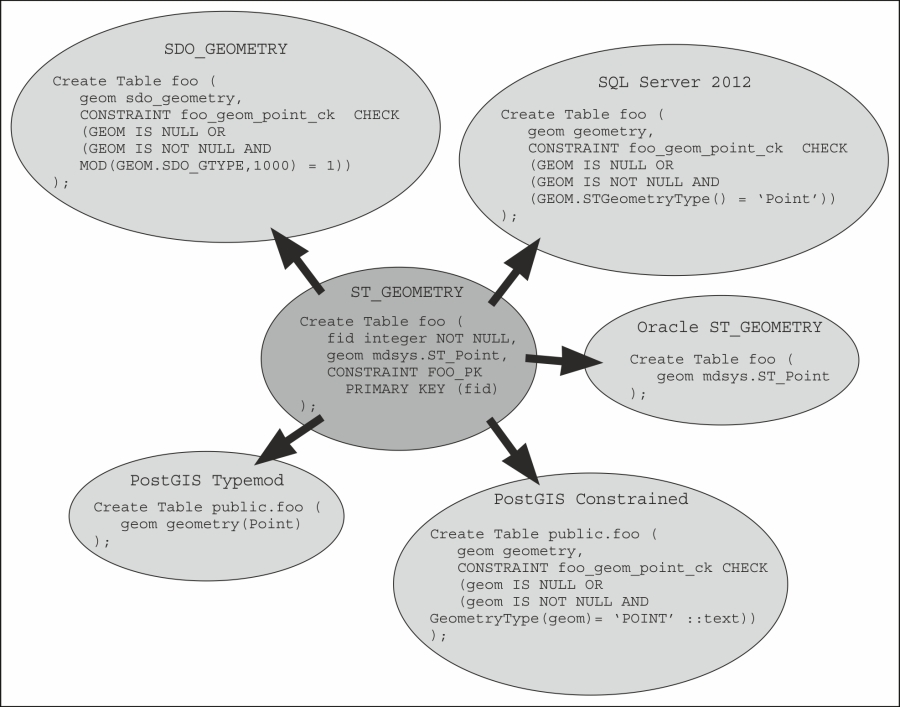From what we have learned so far, a table/column implementation matrix can be produced that will allow us to implement all possible variations of the SQL/MM Spatial standard. In the following diagram, the matrix is implemented only for the ST_POINT subtype. However, included with this book are a set of SQL files that provide an implementation of the standard's ST_* geometry types. No Primary Key attribute and constraint text is included for brevity's sake in any of the implementations shown in the following diagram:

Because some Oracle geometry subtypes (CircularString) can only be identified by functions that cannot be used by CHECK constraints (such as Get_WKT), a trigger must be constructed to implement the constraint:
Create Or Replace Trigger st_road_circularstring_biu
Before Insert or update on ST_ROAD
Referencing old As old new As new
For Each Row
Begin
If (:new.GEOM IS NULL) Then
Return;
End If;
If (:new.GEOM IS NOT NULL And
...


